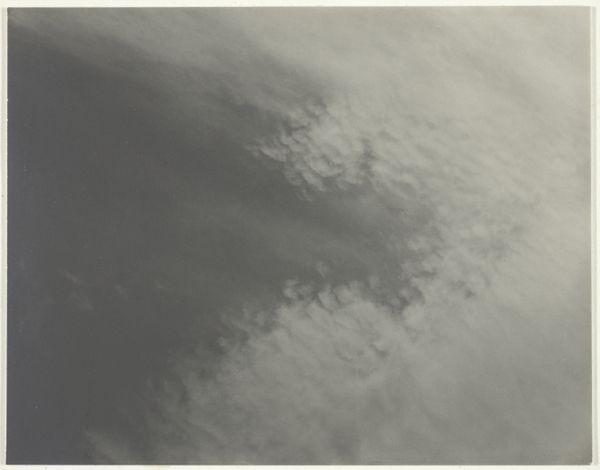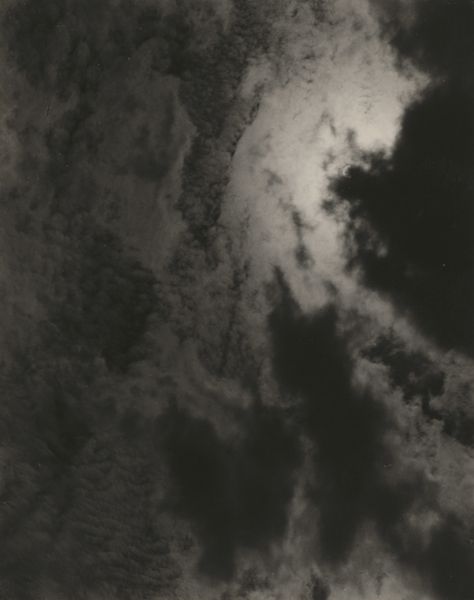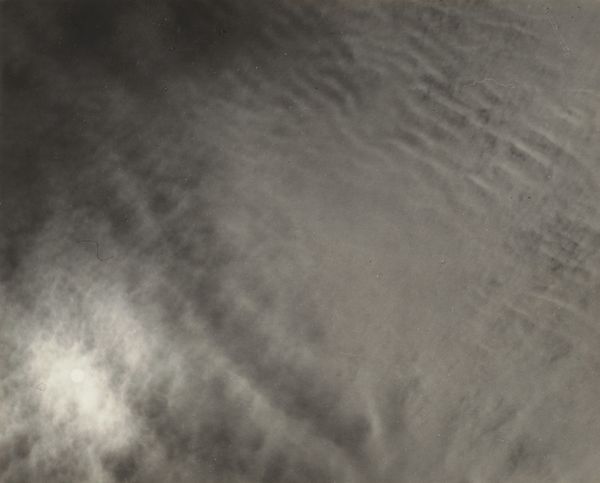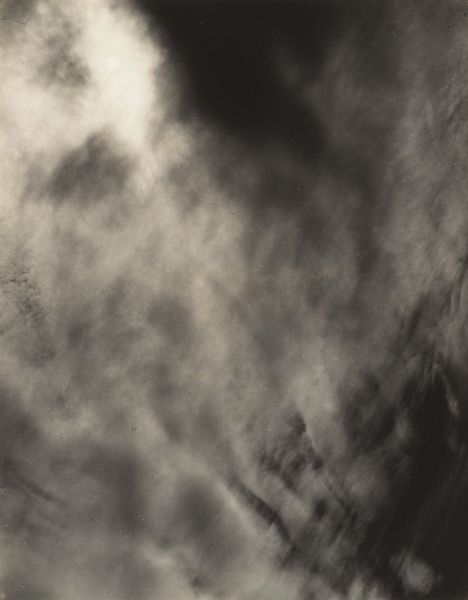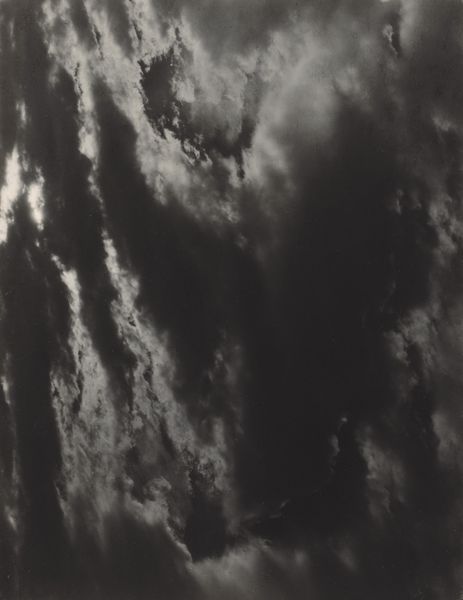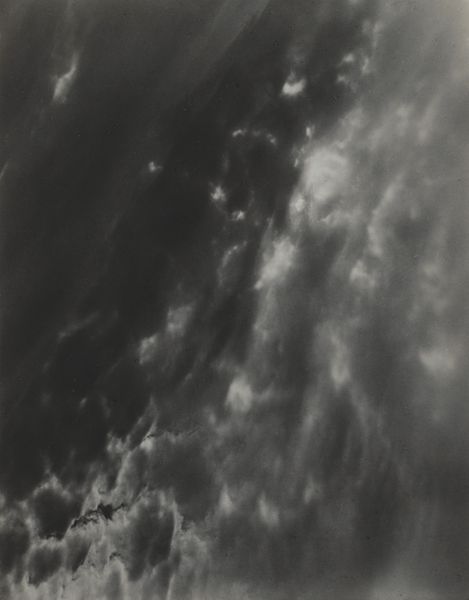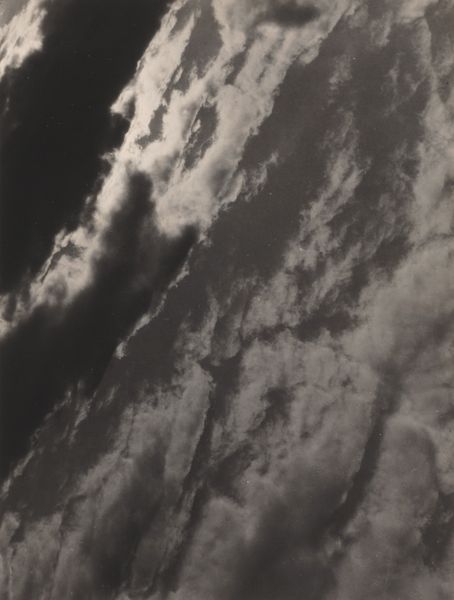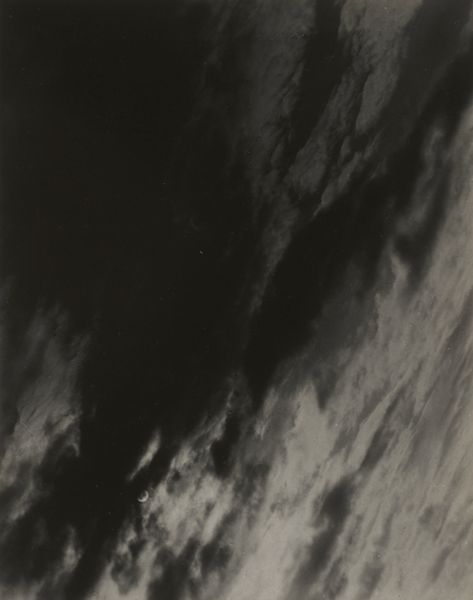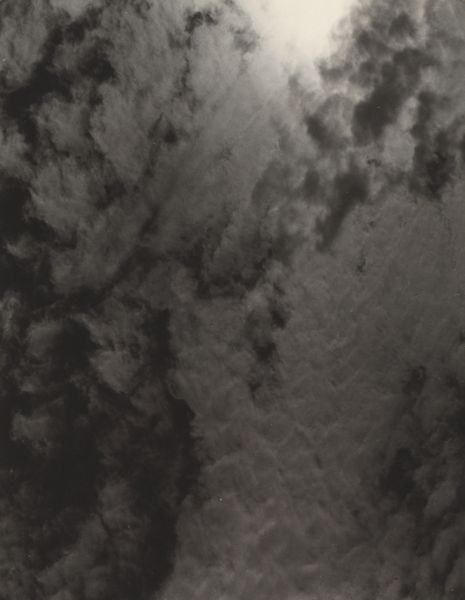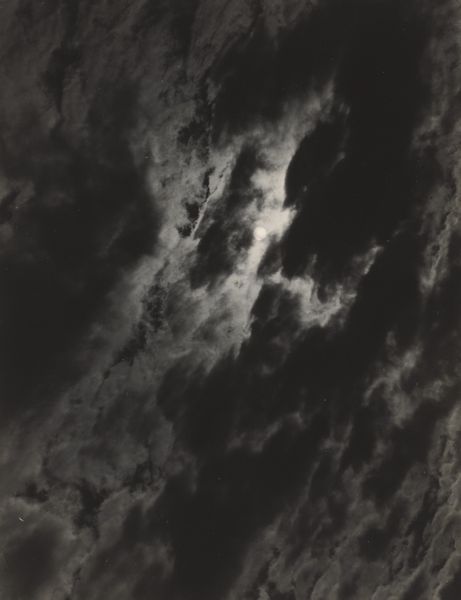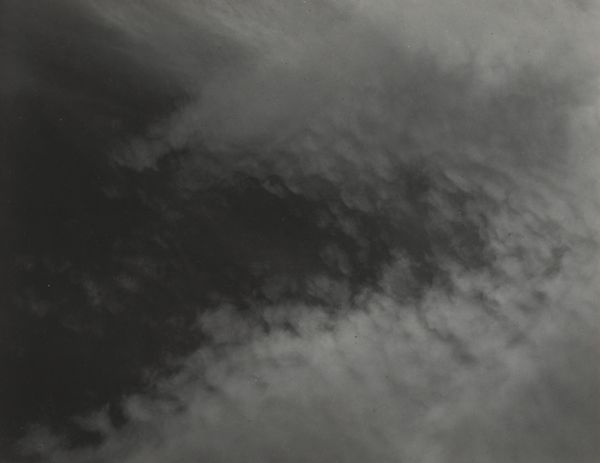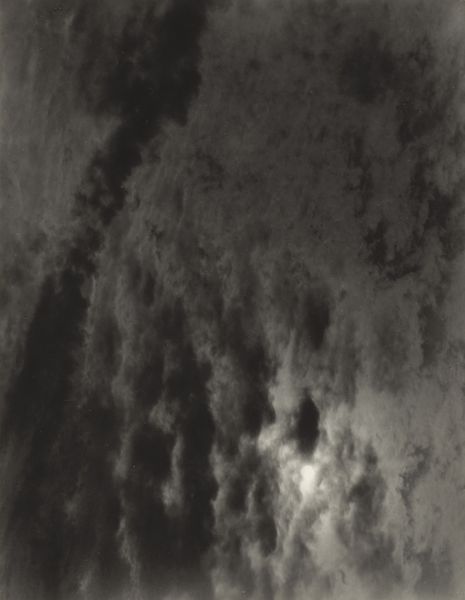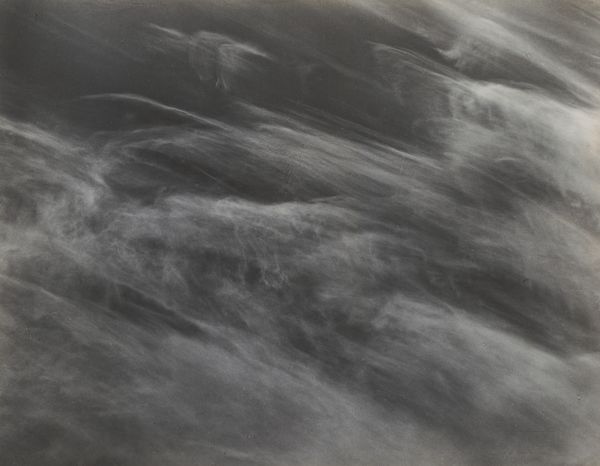
photography, gelatin-silver-print
#
pictorialism
#
landscape
#
photography
#
gelatin-silver-print
#
monochrome photography
#
abstraction
#
monochrome
#
modernism
#
monochrome
Dimensions: sheet (trimmed to image): 9 x 11.6 cm (3 9/16 x 4 9/16 in.) mount: 34.2 x 27.3 cm (13 7/16 x 10 3/4 in.)
Copyright: National Gallery of Art: CC0 1.0
Editor: This is Alfred Stieglitz's "Equivalents," a gelatin-silver print from 1927. I'm really drawn to its almost meditative quality – the varying shades of gray seem to both define and dissolve the forms within the photograph. What do you see in this piece, viewed purely in terms of its visual elements? Curator: Precisely. Observe how Stieglitz orchestrates a sophisticated play of light and shadow, activating the surface. The texture, achieved through the gelatin-silver process, grants a remarkable range of tonal values. Do you perceive the strategic deployment of composition? The image is bisected, but unevenly, leading your eye across the plane. Editor: I notice that contrast now that you mention it, that pushes and pulls my eyes in opposite directions! But can it really be reduced to just composition and light? Doesn’t the subject – clouds – suggest something more? Curator: The subject serves merely as a pretext. Stieglitz utilizes these aerial forms as abstract elements, freeing them from representational constraints. He allows the intrinsic properties of the medium – the photographic process – to dictate the aesthetic outcome. Editor: So, the cloudscape is really just a vehicle for exploring photographic qualities themselves, not nature? That’s fascinating. Curator: Exactly. Consider how the very act of isolating a fragment of the sky redefines our relationship with the visible world. He challenges us to confront the materiality and construction of an image before any allegorical reading. Editor: I never considered looking at clouds in this completely detached way. Thank you for pointing out the intricacies within its pure visual form! Curator: My pleasure. Deconstructing an image to its essential elements is often key to appreciating its radical nature and influence.
Comments
No comments
Be the first to comment and join the conversation on the ultimate creative platform.
